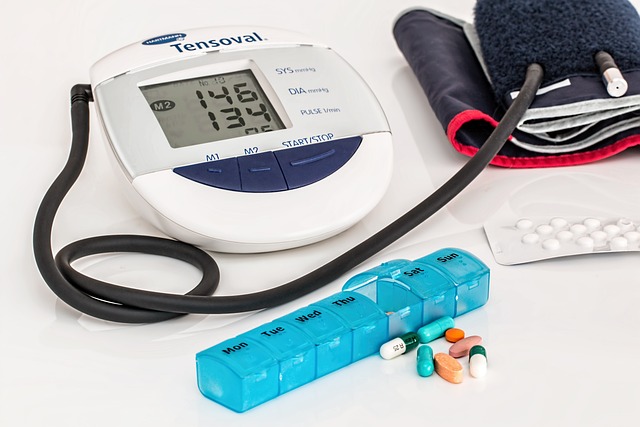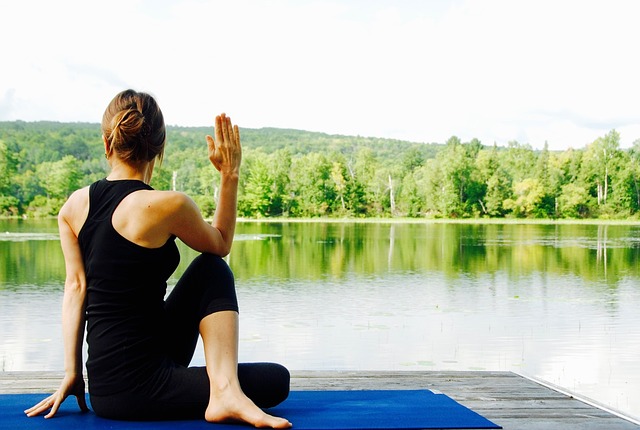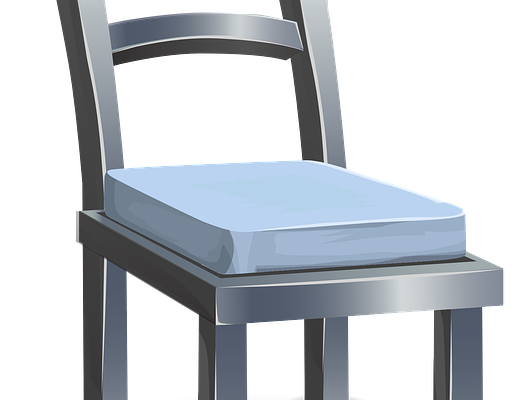We put together some exercises using or while sitting on a chair for seniors or those of you who spend a lot of time sitting at a desk.
It is never too late to begin an exercise routine and receive the benefits of regular physical activity. The beneficial advantages of exercise can be found across all demographics of older adults.
Either active or inactive, those in excellent health, and those managing chronic health conditions. As long as fitness level is taken into account when establishing a program, you are good to go.
Physical activity and exercise in older persons can lower the risk of chronic disease, increase life expectancy, retain functional capacities and the capacity to do daily living tasks such as cooking and cleaning and improve physical health measurements that counteract the effects of aging.
There are various exercise options you can do to improve your strength, balance, mobility, and cardiovascular, all from a sturdy chair for those who do not have an exercise program for years or are battling chronic pain or disability due to injuries or health conditions.
Here are a few exercises we can recommend.
- Wrist and Ankle Rolls
- Single-leg Calf Lift
- Seat and Stans
- Hip Marches while Seated
- Heel Sliding
- Shoulder Press while seated
- Torso Twists While Seated
- Leg lifts with modifications
- Planks with modifications
- Burpees with modifications
- Pull-apart band

Wrist and Ankle Rolls
Many senior adults have impaired circulation through their extremities, which can lead to balance and mobility issues. Before entering into more intense workouts, wake up the hands and feet with a series of lower-intensity routines.
Sit tall in a firm chair, with your back straight and not resting against the back of the chair.
- Flex your fingers several times, opening and closing your fists before creating fists and rolling your wrists 10 times in each direction.
- Experiment with your feet in the same way.
- First, flex and point each foot individually while curling and straightening your toes.
- Roll each ankle 10 times to the inside, then roll each ankle to the outside 10 times.
Single-Leg Calf Lift
Calf raises, which can be done while sitting, can develop strength and mobility in the lower leg.
- Engage your core and stare straight ahead while sitting tall in a chair with feet placed flat on the floor about a hip distance apart.
- Begin with the right foot and elevate your heel as high as you can from the ground, attempting to raise as far as you can on your toes while activating the calf.
- Return the heel to the floor and repeat for a total of 10 repetitions.
- Rep the motion with your left leg.
Perform 3 sets of 10 reps on each leg.
Following the initial sets, execute two more sets of ten repetitions, this time elevating both heels at the same time. Hold your heels up from the floor for 20 seconds at the end of the last set.
Sit-and-Stands
This exercise is for elderly people who have difficulty rising from low chairs or soft couches.
Sit-and-stands, a precursor to squats, can assist seniors in achieving or retaining the capacity to get in and out of chairs independently, boosting leg strength, functional balance, and control.
- Begin by sitting on a firm chair with your feet about hip-distance apart on the floor.
- Engage your core and tilt forward from the hips, using as little assistance from your hands or arms as possible.
- Push your weight through all four corners of your feet and stand up, completely extending your knees and hips.
- Reverse the motion, thrusting your hips back and bending your knees to gently lower yourself to a seated posture.
Modification: If you are unable to press all the way to stand, simply shift your weight forward and elevate your glutes an inch or two from the chair seat, holding for a second before lowering back down. Work on gaining the strength and balance required to stand on your own over time.
Hip Marches While Seated
Sitting hip marches are a wonderful option for those who need to develop hip flexibility and mobility or who need a modified option for undertaking a cardiovascular activity. The following are some pointers for carrying out the task.
- Sit in a sturdy chair with your feet flat on the floor with hip-distance apart.
- Grasp the chair’s edges or armrests with both hands and activate your core muscles to keep your torso tall.
- Lift your one leg, either left or right, as high as you comfortably can with your knee bent as if performing a high-knee march.
- Control fully lower your right foot to the floor.
- Repeat on the other side.
At least 20 alternate marches must be performed in a row. Take a pause before repeating 2 to 3 times more. This exercise can be repeated for a stronger cardiovascular effect, or it can be used as part of a warm-up to help elevate the heart rate.

Heel Sliding
Heel slides are a sort of modified hamstring curl that is used to develop the big muscles that run across the back of the leg between the glutes and the knees. Because the exercise requires core activation, it can also help to increase abdominal strength.
- Sit upright in a strong chair; knees bent, feet flat on the floor with your feet hip-distance apart.
- Extend one of your legs by flexing the same foot such that the heel stays on the ground, but the toes point up toward the ceiling.
- Engage your glutes and hamstrings, dragging your heel back toward the chair while keeping it in contact with the floor.
- Reverse the movement and extend your same knee while sliding your heel away from you.
Before switching legs, do 10 to 12 repetitions on one side. Perform 2 to 3 sets per leg.
While you can do this exercise without any extra equipment, you may wish to use a paper plate or a tiny towel to help the heel move around the floor.
Shoulder Press While Seated
This type of overhead lifting exercise, in addition to developing strength, takes the shoulders through a full range of motion, which is beneficial for preserving shoulder flexibility.
To complete this exercise, use lightweight dumbbells, water bottles, canned foods, or resistance bands. Select a long, flat resistance band and secure it around your shoulders to execute this exercise.
- Sit tall in a firm chair, with your feet about shoulder-distance apart on the ground.
- Hold dumbbells on each hand or the end of a resistance band at your shoulders, elbows bent, palms facing away.
- Extend your elbows and extend your arms straight up overhead.
- Slowly return to the starting position.
Try to complete 2 to 3 sets of 10 to 12 repetitions.
Torso Twists While Seated
The sitting torso twists stimulate the core, notably the obliques, while also improving spinal mobility.

- Sit up straight with your feet about hip-distance apart on the ground.
- Make sure you’re not leaning back in your chair.
- Put both hands behind your head, elbows bent and pointed out toward the sides of the room.
- Exhale and twist your body to one side as much as you can comfortably while keeping your pelvis stable.
- Return to the center by inhaling and keeping your hips stable.
- Exhale and twist to the other side as far as you can comfortably.
- Return to the center with an inhale.
Continue twisting to each side between 6 and 8 times. Rest for a few minutes before beginning the second set. Try to complete 3 sets.
Leg Lifts with Modifications
A chair-based modified leg raise can help you strengthen your core. While it’s better to utilize a strong chair with armrests for this action, you can also do it while clutching the chair’s edges beside your hips.
- Sit tall on a chair with your core engaged and your feet flat on the floor.
- Maintain proper posture by rolling your shoulders back.
- Hold the armrests or grip the seat of the chair. While you are exhaling, lift both legs as high as you can with your knees bent.
- You need to keep your feet and knees together for this exercise.
Hold for 5 seconds before lowering your feet to the floor.
Complete 3 to 5 sets of 10 to 12 repetitions each.
Planks with Modifications
Planks improve core stability and strength in the front part of the body. However, efficiently maintaining your entire body weight can be difficult. A simple chair modification can make the transition easier.
Place the chair in front of a wall so that it is stable and does not move while you complete the plank.
You can place the chair with the seat facing the wall, giving you access to the back of the chair for support, or with the back facing the wall, if you prefer.
Folks with limited strength or mobility should begin by using the chair’s back for support.
- Once the chair is secured to the wall, place your hands on the seat or back of the chair; depending on how your chair is positioned, sit on the chair with feet shoulder-width apart.
- Engage your core and back up until your body creates a straight diagonal line from your heels to your head.
- Your arms should be exactly straight, your hips should be properly placed between your knees and shoulders, and your abdominals should be fighting to maintain your body in good form.
Try to hold this position for 10 to 60 seconds before rising to your feet.
Complete 3 sets of 3 planks, holding each for as long as you can. Make sure you keep good form.
Burpees with modifications
Strict burpees may be inaccessible to the majority of older persons, but with modifications, they may be absolutely safe. Consider performing a burpee in the following manner:
Place a strong chair against a wall so that the back is against the wall and the chair does not slide or move.
- Face the chair with your feet shoulder-width apart.
- Enter a half-squat stance by pressing your hips back and bending your knees.
- Put both hands firmly on the seat of the chair, arms fully extended, and palms aligned under the shoulders.
- In a modified chair plank posture, step one foot behind you, then the other, so your body forms a straight line.
- Step each foot forward to its starting point, then reverse the process.
- As you raise to stand, press through your feet and stretch your knees and hips.
- Lift your arms over your head and clap your hands together as you do so.
This is equivalent to one modified chair burpee. Perform as many as you can with flawless form (target 6 to 10). Finish 2 to 3 sets.
Pull-Apart Band
Because many seniors have rounded backs, it’s critical to work the posterior chain to keep the chest open and the back strong.
The band pull-apart exercise is beneficial for posture correction.
- With both hands, hold a tiny resistance band in front of you.
- Pull the band with your elbows out wide.
- While you pull the band apart, squeeze your shoulder blades together. This movement engages your lats and rhomboids.
- Return your arms to the starting position slowly.
Repeat 6 to 10 times for 3 sets.
To Conclude on Chair Exercises for Senior
We hope these exercises can motivate you to get your body in motion. If you stop moving around, it can make you stiffer and stiffer; you like to move around less.
It can be a vicious cycle, and you need to break that. If you have special conditions where you can not do these types of exercises, you need to consult your doctor. Perhaps you need to see a physical therapist to design an exercise program that can benefit you.
